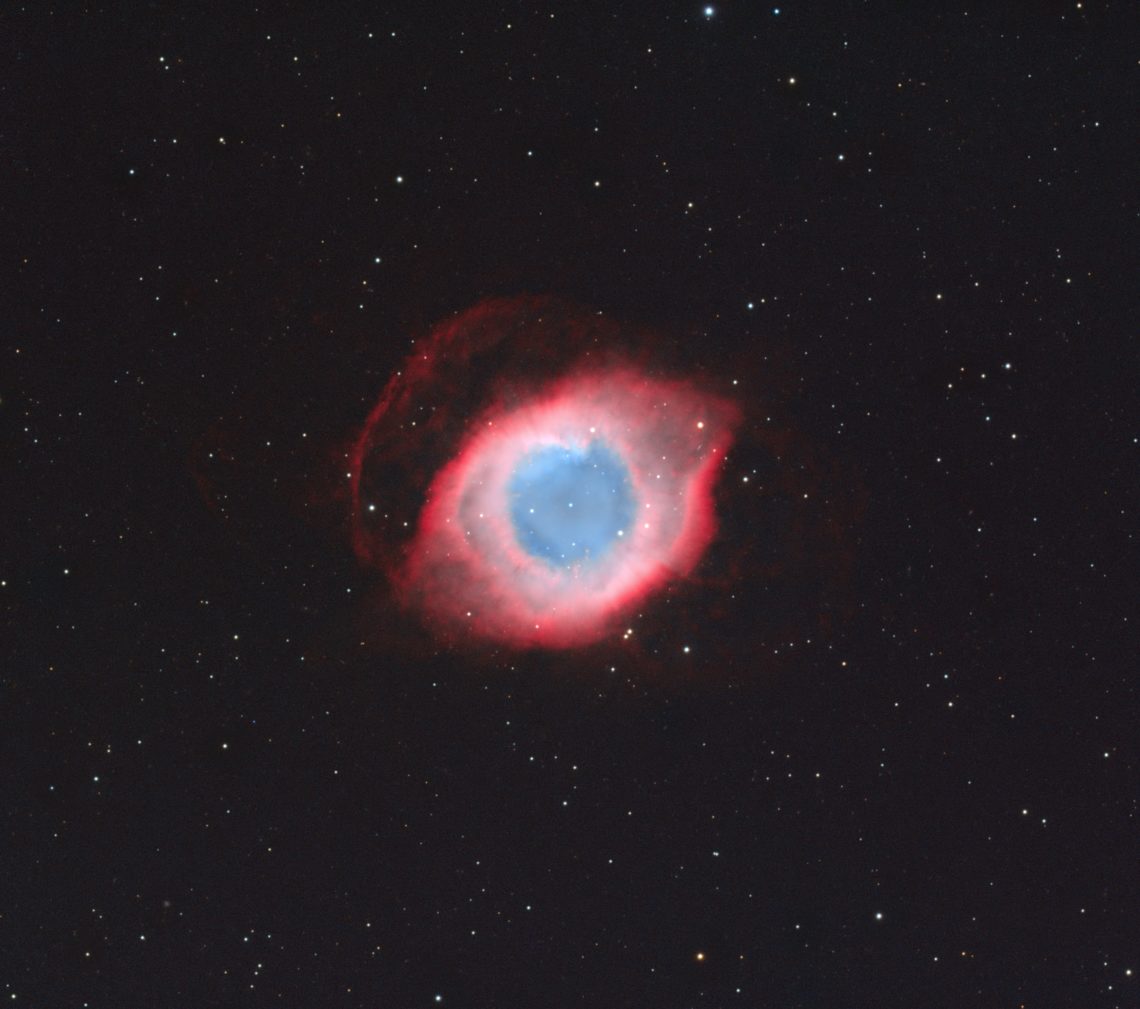The Helix Nebula, NGC7293, is one of the largest and brightest planetary nebulae in the sky – only 650 light years from earth in the constellation Aquarius. For the expansion velocity one ca estimate that the Helix Nebula was born 10000 years ago.
It was formed by a low-mass star, very much like our sun, at the end of its life. After having exhausted all the hydrogen fuel in its center, the star leaves the main sequence where it has spent around 10 billion years. Fusion processes . At some point these fusion processes cannot proceed, the core stops to produce energy and starts to contract. The outer layers of the star are expelled. What is left is the naked hot core of the star rich in carbon and oxygen and the expanding outer shells of gas. The core cools to become a white dwarf and the outer shells form a beautify planetary nebula. The emission of the planetary nebula is powered by the radiation of the hot remnant of the stellar core, you can see it in the image as a blue dot in the center of the nebula.

This image is a bi-color narrowband composite using Hα and OIII filters with a total of 10 hours of exposure time. Blue corresponds to the OIII emission, and red to Hα. The stars were added from a short set RGB exposures to achieve natural star colors.
| Telescope | CFF Triplet APO 160mm, Riccardi Reducer, f=810mm |
| Camera | ASI1600MM Pro, 8-Slot Filter Wheel with Baader Filters |
| Exposures | HO, 58,62 x 300sec, 10 hours total |
| Data taken | 18 – 26 October 2019 |
| Site | TURMX @ E-EyE Observatory, Extremadura |
| Processing | Robert Roth, 27 October 2019 |
